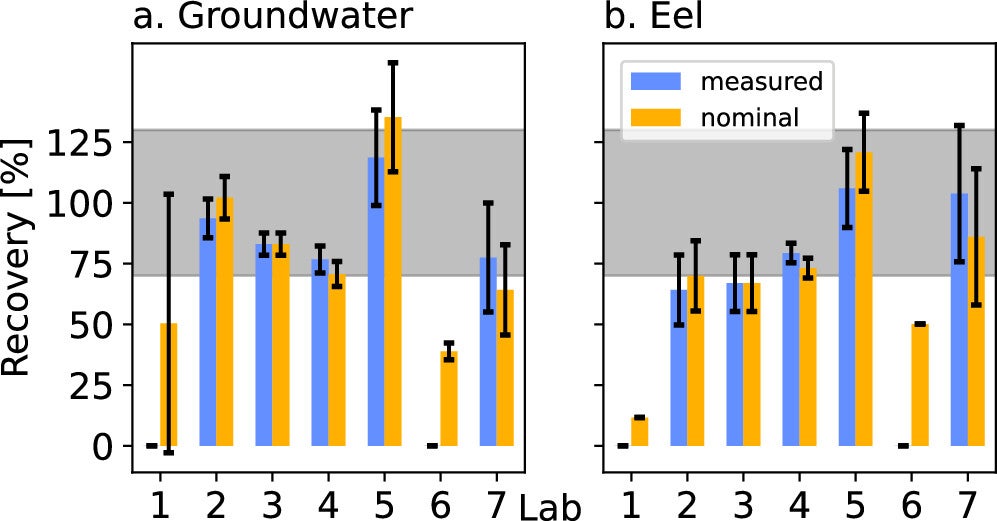Fewer than one hundred unique PFAS have commercially available analytical standards, making it difficult to understand the scope and reach of the entire class of PFAS. Attempting chemical-by-chemical regulation of PFAS is challenging and time consuming; based on widespread contamination and persistence of PFAS, regulating for the entire class would help stem future risks.
PFAS research often identifies organoflourine, organic compounds containing a carbon–fluorine bond, for regulation in the wider environment. However, in large part, standard methods for extractable organoflourine (EOF) analysis do not exist. In an effort to create a comparison, STEEP researchers collaborated with seven independent, international laboratories, representing academic, government, and commercial organizations, to compare EOF and targeted PFAS measurements in groundwater and eel (Anguilla rostrata) from sites contaminated with aqueous film-forming foam (AFFF), or fire-fighting foam.
Groundwater and eel samples were collected in June, 2021 downstream from a former military fire training area in an AFFF-contaminated watershed on Cape Cod, Massachusetts. Eel (Anguilla rostrata) samples were collected by the Massachusetts Division of Fisheries and Wildlife, chosen because of its migratory lifestyle, high fat content (suitable for PFAS binding), and overall abundance. Eel and groundwater samples, as well as inorganic fluoride and a standard PFAS mixture were shipped to laboratories in August, 2021. Labs measured concentrations using their own standard procedures (to compare and replicate results across different methods) and return results within six months.
While the data collected across laboratories was similar, STEEP researchers evaluated methods for replication and accuracy, and overall, the comparison underscores the need for standard methods for sample extraction, instrumental analysis, and data processing.
Figure: Percent recovery of PFAS mixture in (a) groundwater and (b) eel. Bars represent the average percent recovery, and error bars represent the standard deviation. The shaded region represents a ±30% recovery window that is generally considered acceptable for targeted PFAS analysis.
Ruyle, B.J., Pickard, H.M., Schultes, L., Fredriksson, F., Heffernan, A.L., Knappe, D.R.U., Lord, H.L., Meng, P., Mills, M.A., Ndungu, K., Roesch, P., Rundberget, J.T., Tettenhorst, D.R., Van Buren, J., Vogel, C., Westerman, D.C., Yeung, L.W.Y., and Sunderland, E.M. 2023. Interlaboratory Comparison of Extractable Organofluorine Measurements in Groundwater and Eel (Anguilla rostrata): Recommendations for Methods Standardization. Environmental Science & Technology 2023 57 (48), 20159-20168. [DOI: 10.1021/acs.est.3c04560]

